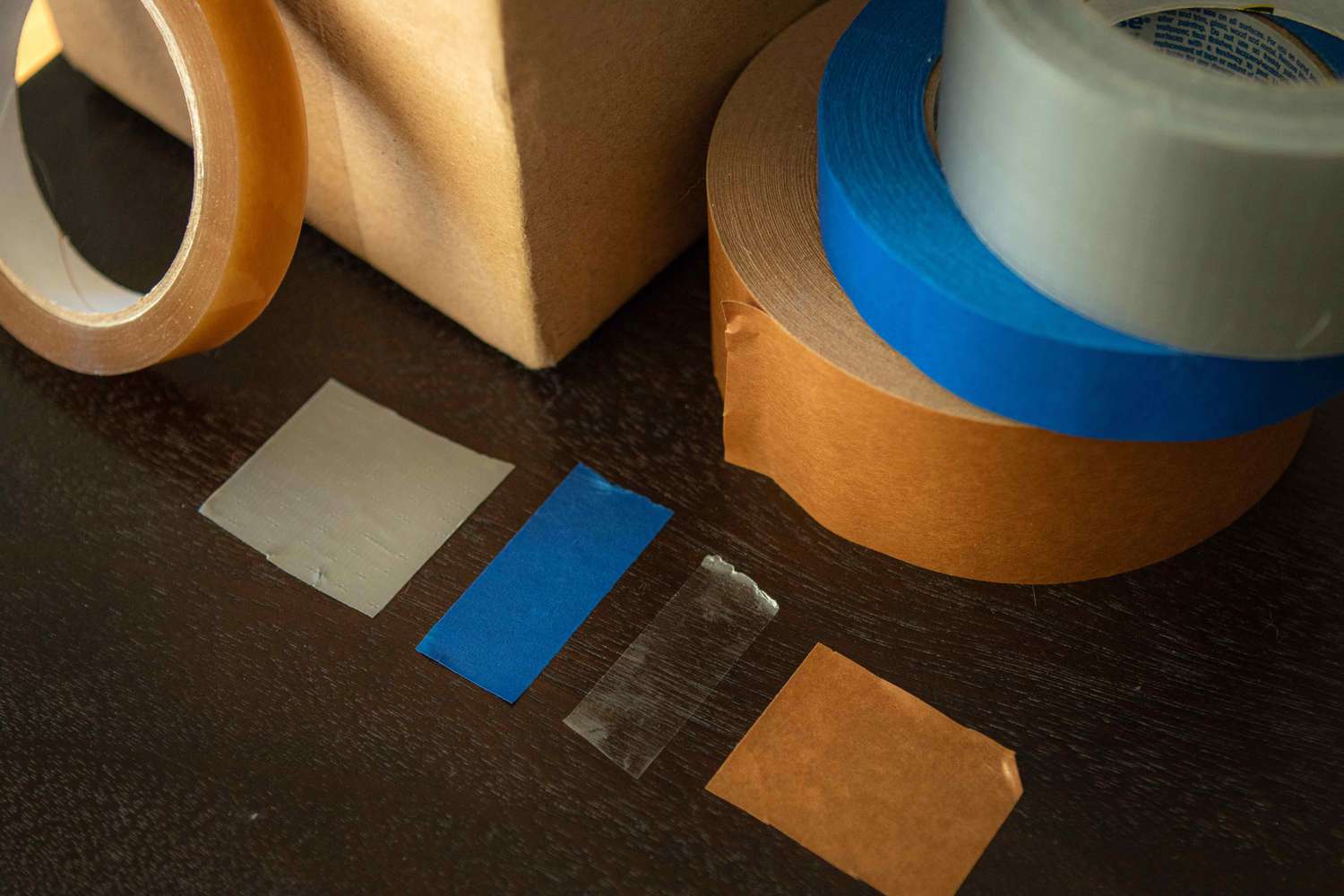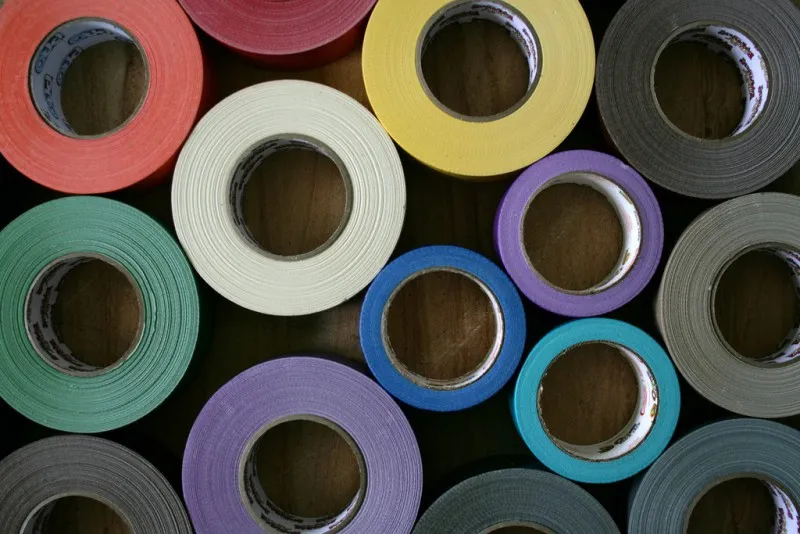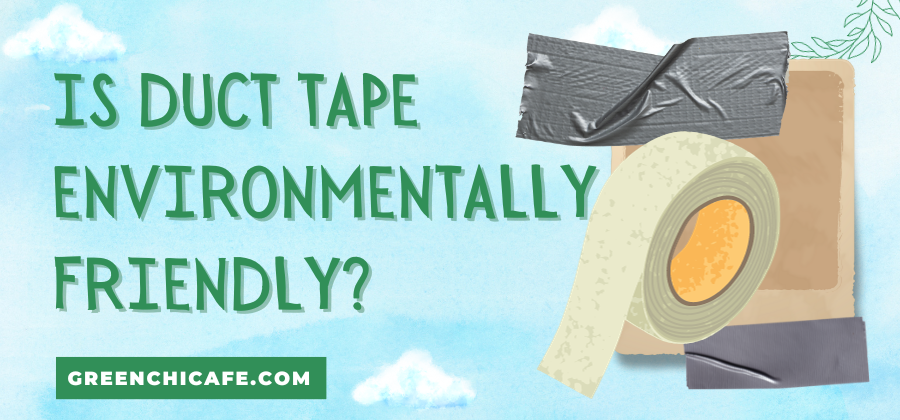Last Updated on June 5, 2024 by Annie Baldwin
Duct tape is a household staple known for its versatility and excellent adhesion power.
But with its petroleum-based adhesive and plastic backing, is duct tape an eco-friendly choice?
Let’s take a closer look.
Is Duct Tape Environmentally Friendly?

Duct tape is generally not environmentally friendly.
It is made of materials like polyethene and petroleum-based adhesives that do not biodegrade quickly.
While convenient, duct tape generates a lot of plastic waste and its components cannot be easily recycled.
Eco-friendly duct tape alternatives made from natural or recycled materials are available.
Key Points
- Duct tape contains plastics and adhesives that take a very long time to decompose.
- Most duct tape cannot be recycled due to its composite materials.
- Eco-friendly alternatives like natural fibre or recycled tapes are available.
Our Opinion
In our opinion, while duct tape is very useful, it has a negative environmental impact due to its plastic components and lack of recyclability.
We recommend using it only when absolutely necessary.
There are more sustainable options available for many tasks, like cotton duct tape or other eco-friendly adhesives.
The best option for the environment is to avoid using tape at all when possible.
Is Duct Tape Recyclable?

Most duct tapes are made from polyethene (HDPE) plastic and synthetic rubber adhesive. These materials are not biodegradable or compostable. While the HDPE backing can technically be recycled, duct tape is rarely accepted by recycling facilities because of the adhesive residue.
Standard duct tapes end up in landfills, where they can take hundreds of years to break down. However, some eco-conscious brands now offer duct tape made with plant-based adhesives and recycled materials. For example, Shurtape’s PPM Duct Tape Eco Line uses a natural rubber adhesive and recycled polyethene backing. While not completely zero-waste, these products reduce plastic use and are easier to recycle.
Ultimately, duct tape is very difficult to recycle. Opting for plant-based or recycled duct tape makes disposal less impactful. But avoiding duct tape entirely is the most eco-friendly option when possible.
Is Duct Tape Biodegradable?
Standard duct tape is not biodegradable. The polyethene plastic backing and synthetic rubber adhesive are designed for durability and will not break down naturally. Duct tape discarded in landfills can persist for hundreds of years.
Some new duct tape products use natural materials like cellulose film or plant-based adhesives. These are marketed as biodegradable options. However, most still contain some synthetic materials and plastics that do not fully decompose.
Truly biodegradable tapes use no plastics at all. Options like PaperTape use cellulose fiber backing and natural rubber adhesive. While not as strong as traditional duct tape, these products will break down completely when composted.
What materials is duct tape made from?
Traditional duct tape is made from three key components:
- Polyethylene plastic backing – This provides strength and durability. HDPE is commonly used.
- Fabric reinforcement – Usually a mesh or scrim between the backing and adhesive.
- Rubber-based adhesive – The sticky substance that provides adhesion. Often synthetic rubber or acrylic.
Some varieties may also include:
- Coloring – Pigments added for visibility and style.
- Curing agents – Chemicals to aid in adhesive bonding.
- Plasticizers – Chemicals that enhance flexibility.
Newer eco-friendly duct tapes utilize alternative materials:
- Plant-based plastic backing – Made from cellulose instead of polyethylene.
- Natural rubber adhesive – Derived from rubber trees instead of synthetic chemicals.
- Water-based acrylic adhesive – Uses water instead of petroleum-based solvents.
Does Duct Tape Contain Toxic Chemicals?

Traditional duct tape can contain small amounts of potentially harmful ingredients:
- Plasticizers like phthalates help make the backing flexible but may leach out.
- Antioxidants such as BHT prevent degradation but have raised health concerns.
- Lead and other heavy metals may be present in pigments and dyes.
However, these are typically in very low concentrations and duct tape is not considered highly toxic. The backing is inert once cured and the adhesive is relatively stable.
The main environmental issues with conventional duct tape are:
- Production requires petroleum and energy.
- Most types are not biodegradable or easily recycled.
Eco-friendly duct tapes avoid questionable ingredients and rely on plant-based materials. But all duct tape should be used sparingly and disposed of properly.
In moderation, duct tape does pose minor health risks. But greener options continue to reduce environmental impacts.
Eco-Friendly Duct Tape Alternatives
Several brands now offer duct tape made with more sustainable materials:
- PPM Duct Tape Eco Line uses HDPE plastic from recycled milk jugs for the backing.
- Green Belting Industries makes duct tape with hemp and other natural fibers.
- Duck brand has a recycled line using recycled polyethylene plastic.
These eco-friendly duct tapes meet performance standards for strength, adhesion, and versatility. Prices are similar to standard duct tape.
For a completely plastic-free option, some companies sell duct tape with a natural cellulose backing. However, these tend to lack the durability of plastic-based tapes.
Using duct tape sparingly and only when needed reduces waste. For a temporary fix, lower-impact tapes like masking tape or recycled paper tape may suffice.
Eco-friendly duct tapes are more sustainable. However, limiting use and reusing tape saves the most resources. A little thoughtfulness goes a long way.
FAQ
What Kind of Tape Is Best for the Environment?
Natural fiber tapes like cotton duct tape or paper tape are more eco-friendly than plastic tape. Look for tapes made from recycled materials or FSC-certified paper.
What Is an Eco-Friendly Alternative to Duct Tape?
Some eco-friendly duct tape alternatives include cotton duct tape, hemp tape, and duct tape made using plant-based adhesives and recycled polyethylene or PET film.
Is Duct Tape Recyclable?
Most duct tape is not recyclable because it contains a mix of materials like polyethylene, fabric, and rubber-based adhesive. The components cannot be easily separated for recycling.
What Are the Negatives of Duct Tape?
The adhesives can contain harmful VOCs. Frequent use generates a lot of plastic waste. Duct tape can also leave a sticky residue that is difficult to remove.
Conclusion
Duct tape is very useful and versatile, but it is not considered environmentally friendly. Most duct tapes contain plastics and adhesives that take hundreds of years to decompose. There are more eco-friendly alternatives available, such as natural fiber tapes or those made from recycled materials. However, avoiding the use of tape altogether has the least environmental impact.
